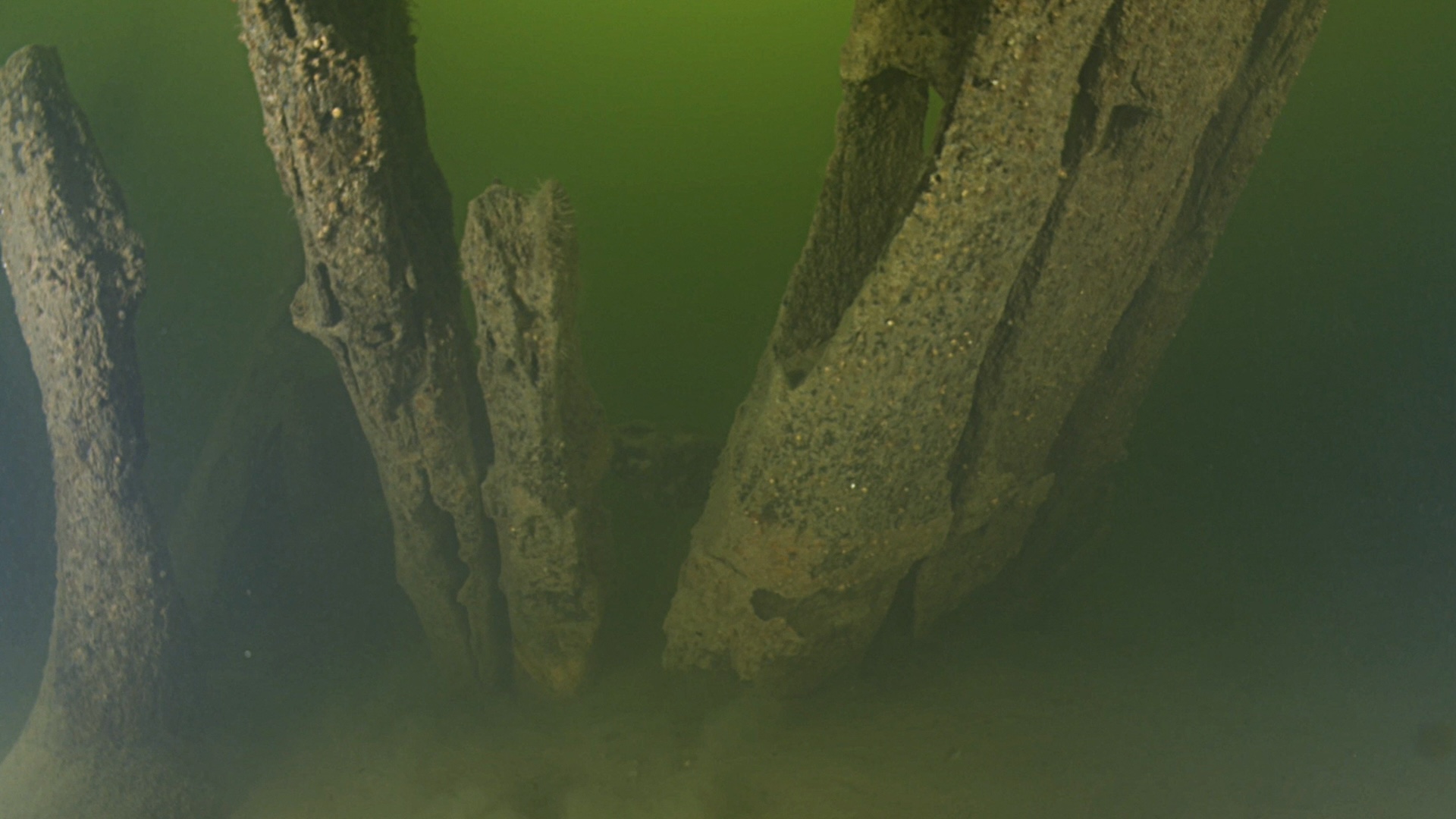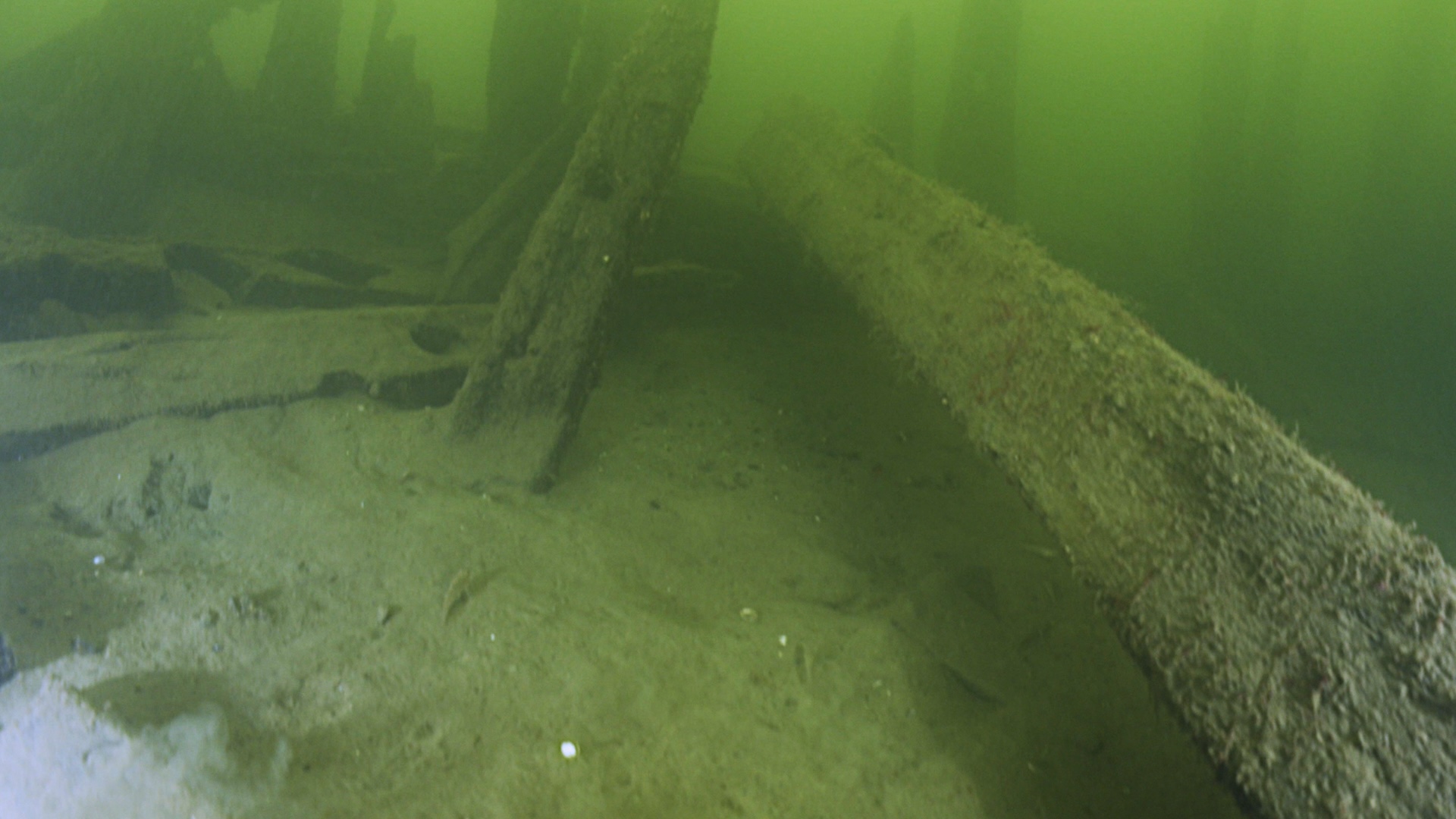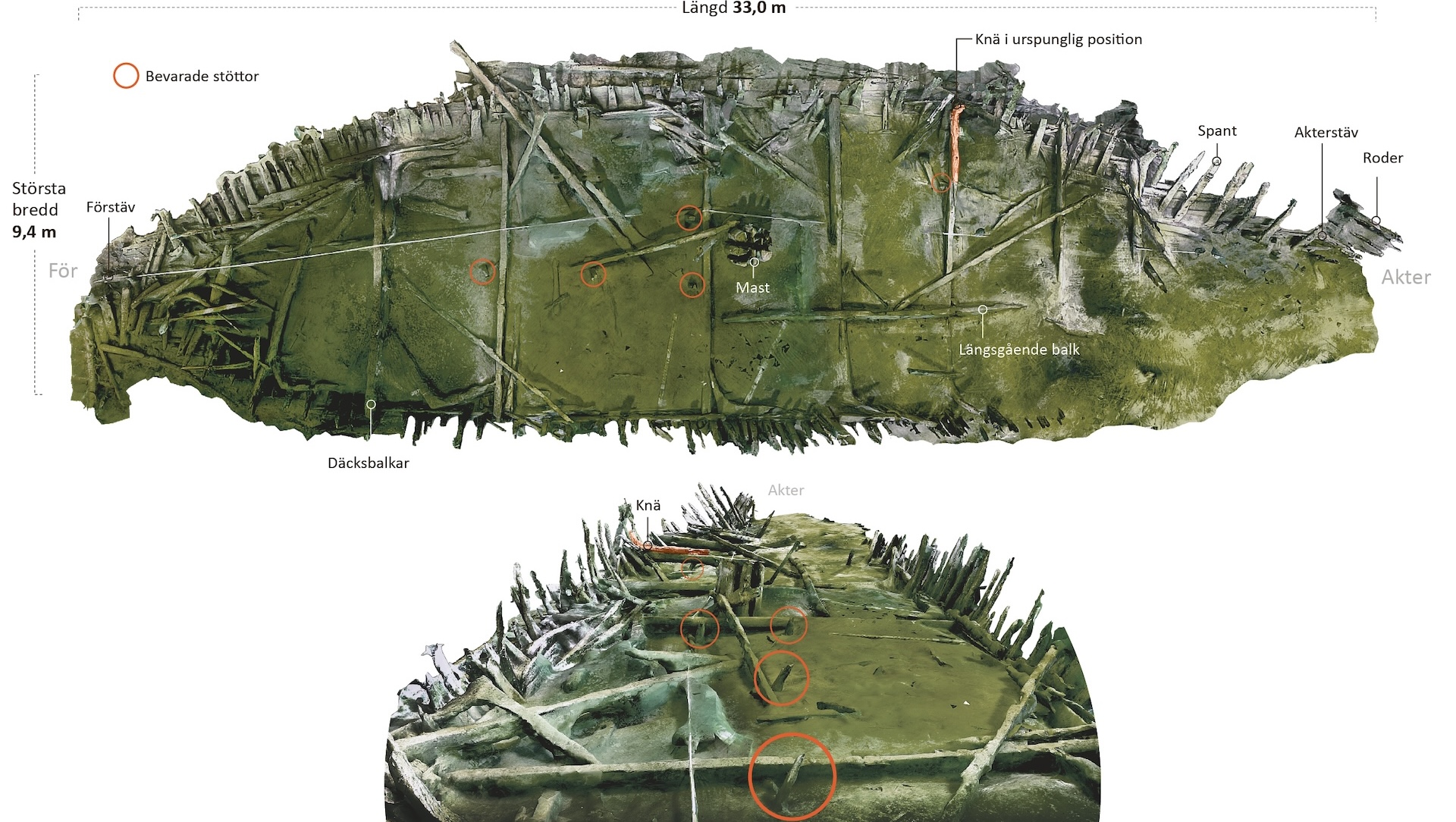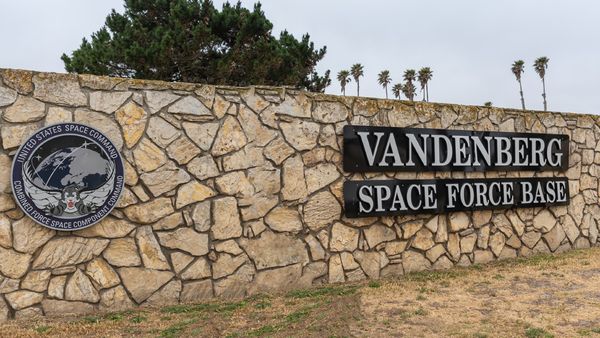
A 15th-century shipwreck off the coast of Sweden may be Scandinavia's oldest shipwreck built in the innovative "carvel" style — a design that gave it the strength to carry heavy cannons, archaeologists say.
The wreck at Landfjärden, south of Stockholm, is one of five in the area that have been known since the 1800s. They were commonly thought to have been from ships dating to the Viking Age (A.D. 793 to 1066).
But last year, maritime archaeologists at Vrak, the museum of wrecks in Stockholm, revealed that four of the wrecks date to the 1600s and 1700s and that the oldest wreck was built before 1480 and perhaps as early as the 1460s, museum curator and project manager Håkan Altrock said in a statement.
"It's a large ship, likely about 35 metres [115 feet] long and 10 metres [33 feet] wide," he said. "The ship's frame still rises high above the seabed, and in the stern, both the sternpost and rudder remain upright."
Related: 32 haunting shipwrecks from the ancient world
New shipbuilding technique
The most significant aspect of the wreck, now known as "Vrak 5," is that it was built in the "carvel" style, with planks on the hull that were flush with neighboring planks so that the whole hull surface was relatively smooth, Altrock said.
By contrast, traditional Nordic ships, such as Viking longships, were built in the "clinker" style with overlapping planks, which had made them light and relatively flexible.
But the use of carvel-style flush planks — an innovation from the Mediterranean dating to about the seventh century A.D. — meant that a ship's hull could be reinforced with framing to make it stronger. This was an important consideration when ships started carrying cannons in the 15th century, Altrock said, so traditional "clinker-built" ships soon became obsolete.


Important wreck
These details make Vrak 5 key to understanding the transition from clinker-built to carvel-built ships — an important period in Sweden's maritime history, Altrock said.
"We plan to apply for external funding for an excavation," he said. "This ship represents a fascinating link between medieval and modern shipbuilding."
The new analysis also showed that the trees used for the wood in Vrak 5 had been felled in Sweden's southern Kalmar region or in the nearby Blekinge region, Altrock said.
The Vrak archaeologists have also made a digital model of the wreck using photogrammetry — a technique that combines digital photographs so that their positions are reflected in three dimensions — and the results are now online.







